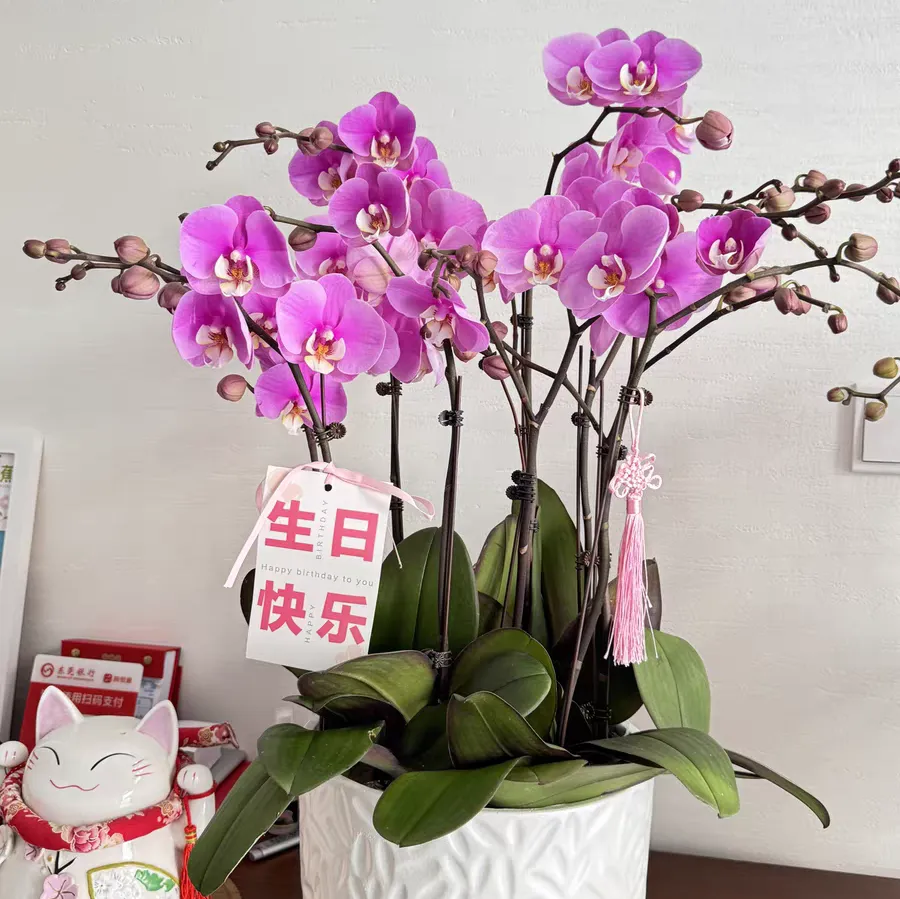What are the differences between summer-flowering and winter-flowering Phalaenopsis (moth orchids)?

Share with
If you want to grow moth orchids (Phalaenopsis), there are distinct differences between winter-flowering and summer-flowering varieties, and both their blooming characteristics and care requirements are quite particular. Below is a guide on how to keep them beautiful and thriving.
### **I. Differences Between Winter-Flowering and Summer-Flowering Moth Orchids**
1. **Blooming Period**
- *Winter-flowering*: Generally blooms from November to February of the following year, coinciding with New Year’s Day and the Spring Festival.
- *Summer-flowering*: A seasonal summer delight, flowering from June to August.
2. **Flower Quantity**
- *Winter-flowering*: Known as a "prolific bloomer," each flower stem can densely bear 15–20 flowers.
- *Summer-flowering*: Produces fewer flowers per stem (about 5 blooms at most), with a delicate and compact appearance.
3. **Flower Color**
- *Winter-flowering*: Features rich, vibrant hues like bright red and deep purple, exuding a festive atmosphere.
- *Summer-flowering*: Tends to softer,淡雅 (light and elegant) tones such as white, light pink, and sky blue, creating a fresh and serene aesthetic.
4. **Petal Patterns**
- *Winter-flowering*: Has faint, subtle petal veins, giving a simple and clean look.
- *Summer-flowering*: Displays deep, clear veins with more intricate and detailed textures.
5. **Growth Habits**
- *Winter-flowering*: Grows relatively slowly due to needing to withstand low temperatures.
- *Summer-flowering*: Grows faster in high temperatures but is more prone to sunburn and diseases.
### **II. Seasonal Care Tips**
1. **Summer Care**
- **Promptly Trim Flower Stems**: After summer flowers fade, cut the stem 2–3 nodes above the base to prevent nutrient loss. The earlier you trim, the faster the plant recovers.
- **Sun Protection and Cooling**: Avoid direct sunlight; place in a shaded indoor area or use a sunshade net. Spray water around the plant to cool it down if the temperature exceeds 30°C.
- **Water Control and Ventilation**: Water sparingly in闷热 (hot and humid) summer conditions—wait until the growing medium is dry. Elevate the pot after watering to enhance air circulation and prevent root rot.
2. **Winter Care**
- **Temperature Management**: Keep winter-flowering orchids above 10°C; move indoors if the temperature drops below 15°C. Use a plastic bag for insulation at night and uncover it during the day for ventilation.
- **Less Watering, More Mist Spraying**: Water every 10–15 days due to slow winter growth, but mist the leaves frequently to maintain humidity and prevent leaf tips from drying.
- **Supplement Light for Blooming**: Place near a south-facing windowsill to get 4–6 hours of daily sunlight in winter. Sufficient light ensures full, vibrant blooms.
### **III. Notes for Beginners**
1. While winter-flowering orchids are abundant and beautiful, they require higher temperatures. For beginners in northern regions without heating, summer-flowering varieties are easier to grow.
2. Moth orchids are sensitive to movement—frequent repositioning can cause bud drop. Find a suitable spot and keep them there.
3. Avoid fertilizing in extreme summer heat or winter cold. During the spring and autumn growing seasons, use specialized orchid fertilizer 1–2 times a month with a dilute solution (薄肥勤施).
In summary, mastering these tips will help you successfully grow both winter-flowering and summer-flowering moth orchids, ensuring they bloom abundantly every year!
Tagged in :




Leave a Reply